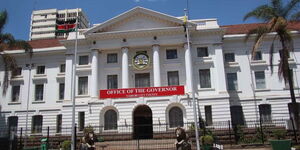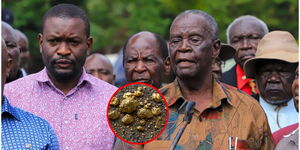In an address on Tuesday, May 14, to the Harvard Business School’s Class of 2025 students at State House, Nairobi, President William Ruto unveiled an ambitious plan to significantly increase Kenya’s average tax rate.
The proposal aims to raise the current tax rate of 14 per cent to approximately 22 per cent by the year 2027. President Ruto highlighted this initiative as a pivotal aspect of his vision for the country's economic future.
This plan experts warn, is not coming from the blues, but it will hugely impact commodity prices as the government seeks to dig deeper into the pockets of Kenyans.
During his speech, President Ruto outlined his intention to incrementally raise the average tax rate, with a target of reaching 16 per cent by the end of the current year. He expressed determination to leave a lasting impact by elevating the tax rate to between 20 and 22 per cent by the end of his term, emphasising the long-term benefits of such a move.
“My drive is to push Kenya, possibly this year we will be at 16 per cent from 14 per cent. I want in my term, God willing, to leave it at between 20 and 22 per cent. It's going to be difficult, I have a lot of explaining to do, people will complain but I know finally they will appreciate that the money we go to borrow from the World Bank is savings from other countries,” President Ruto stated.
At the heart of this proposal lies the concept of the tax-to-Gross Domestic Product (GDP) ratio, as clarified by National Assembly Majority Leader Kimani Ichung’wa. The tax-to-GDP ratio serves as a crucial metric in assessing a nation's tax revenue relative to the size of its economy, indicating the extent to which economic output contributes to tax revenue.
Impact
The move towards a higher tax-to-GDP ratio is not merely a declaration by President Ruto but forms a central component of his Bottom-Up Plan and the country’s Medium-Term Revenue Strategy. This strategy outlines plans to escalate Kenya’s tax collection to 25 per cent by the year 2030, aligning with regional targets set by the East African Community (EAC).
Speaking on the significance of this strategy, economic experts told Kenyans the shift has the potential to broaden the country’s tax base by encompassing sectors and items that have thus far remained outside the tax bracket.
Professor Xn Iraki from the University of Nairobi Faculty of Business and Management Sciences elaborated on this, stating, “It would mean the government raises more taxes by looping in those outside the tax bracket or raising the tax rates for the current taxes."
However, concerns have been raised regarding the feasibility and potential repercussions of such a rapid increase in taxes.
Churchill Ogutu, an economic expert, explained how the government's intention to utilise Finance Bills as a mechanism for incremental tax growth, with the aim of steadily increasing revenues leading up to 2027.
“What the government will do, is introduce taxes in every Finance Bill, as it seeks to increase revenues,” stated Ogutu. He stated the government will keep adding taxes in the subsequent Finance Bills.
Nevertheless, he cautioned that achieving the target tax rate of 20 per cent, let alone 22 per cent, within the stipulated timeframe might prove challenging.
“The bigger fear is if the tax revenues go up without commensurate growth in GDP,” noted Professor Iraki, illustrating the importance of ensuring that economic growth keeps pace with increased tax revenues.
Ogutu however warned, “Getting to the target of 20 per cent let alone 22 per cent by 2027 might be a tall order.”
Despite these reservations, the government remains steadfast in its pursuit of enhanced tax revenue. The Kenya Revenue Authority (KRA) has set an ambitious target of tax collections worth Ksh2.94 trillion in the next fiscal year, a significant increase from the current year’s Ksh2.62 trillion. However, challenges persist, with KRA falling short of its targets in recent months.












